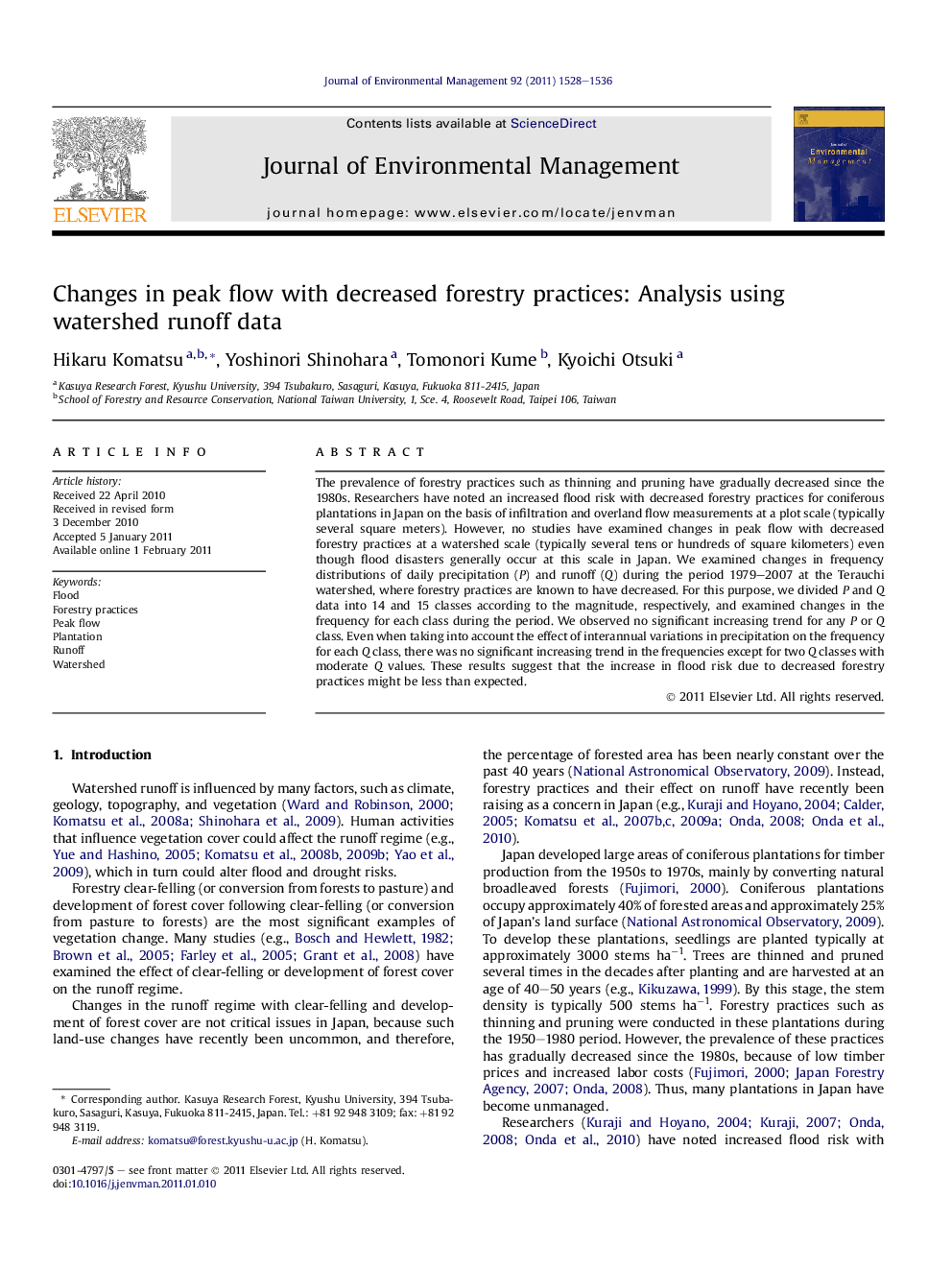| Article ID | Journal | Published Year | Pages | File Type |
|---|---|---|---|---|
| 10505480 | Journal of Environmental Management | 2011 | 9 Pages |
Abstract
The prevalence of forestry practices such as thinning and pruning have gradually decreased since the 1980s. Researchers have noted an increased flood risk with decreased forestry practices for coniferous plantations in Japan on the basis of infiltration and overland flow measurements at a plot scale (typically several square meters). However, no studies have examined changes in peak flow with decreased forestry practices at a watershed scale (typically several tens or hundreds of square kilometers) even though flood disasters generally occur at this scale in Japan. We examined changes in frequency distributions of daily precipitation (P) and runoff (Q) during the period 1979-2007 at the Terauchi watershed, where forestry practices are known to have decreased. For this purpose, we divided P and Q data into 14 and 15 classes according to the magnitude, respectively, and examined changes in the frequency for each class during the period. We observed no significant increasing trend for any P or Q class. Even when taking into account the effect of interannual variations in precipitation on the frequency for each Q class, there was no significant increasing trend in the frequencies except for two Q classes with moderate Q values. These results suggest that the increase in flood risk due to decreased forestry practices might be less than expected.
Related Topics
Physical Sciences and Engineering
Energy
Renewable Energy, Sustainability and the Environment
Authors
Hikaru Komatsu, Yoshinori Shinohara, Tomonori Kume, Kyoichi Otsuki,
